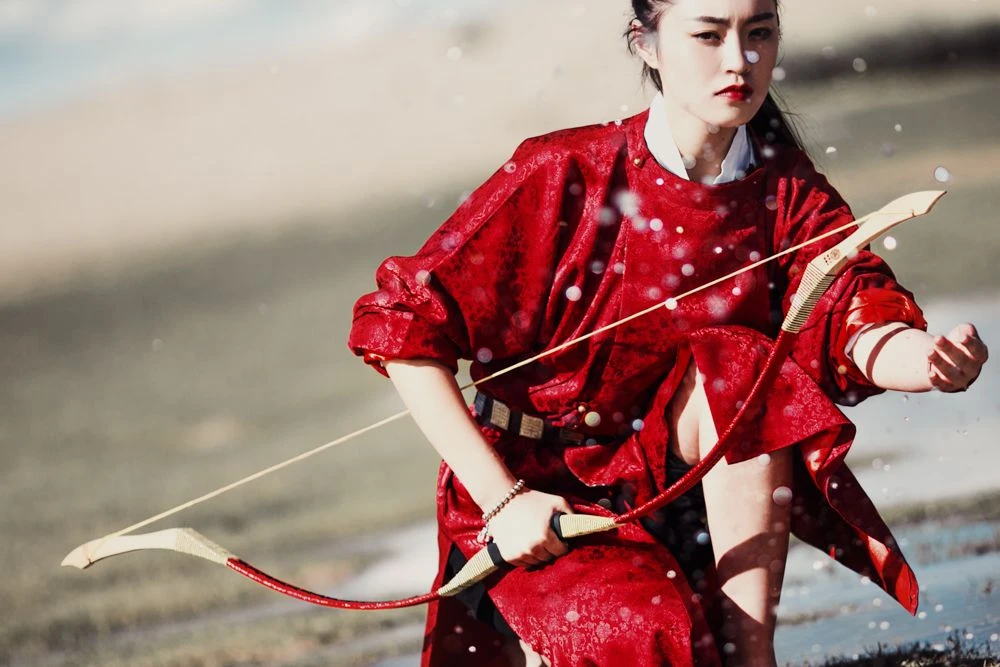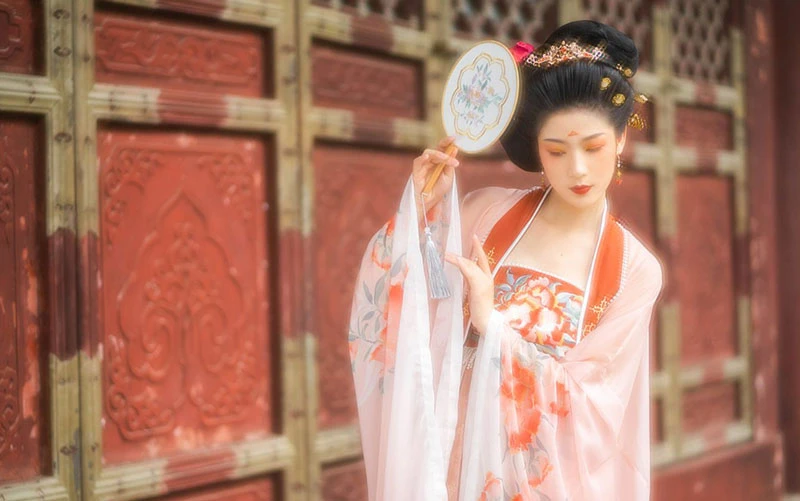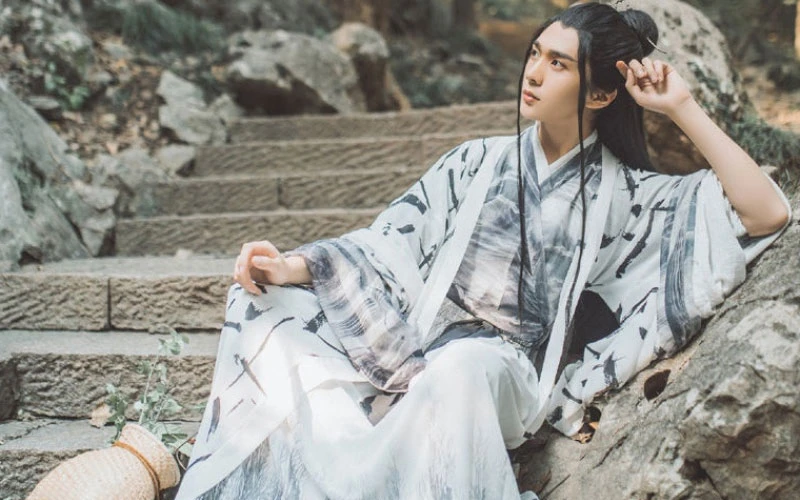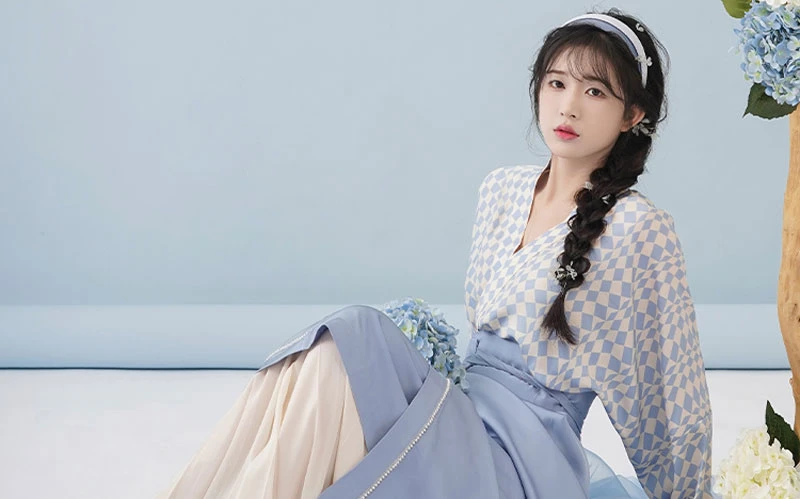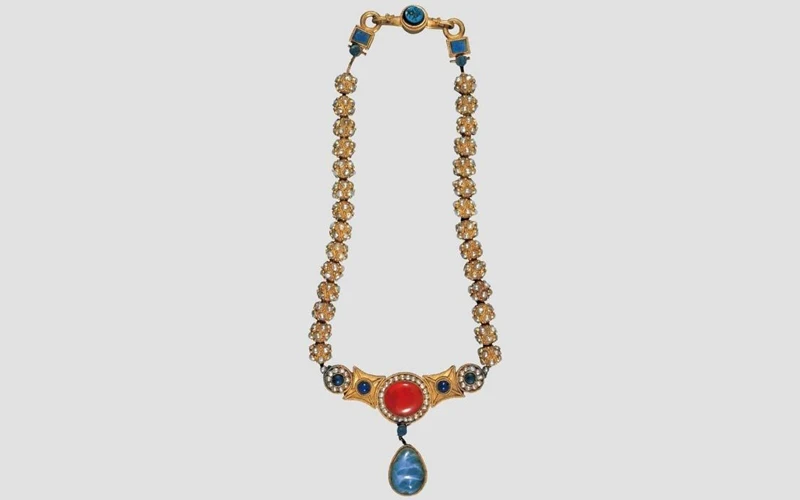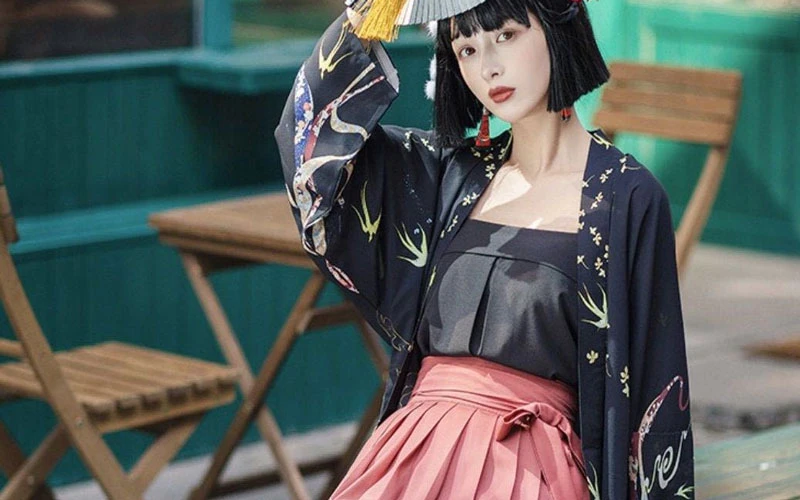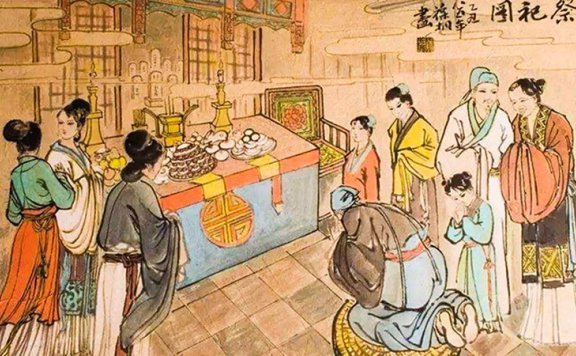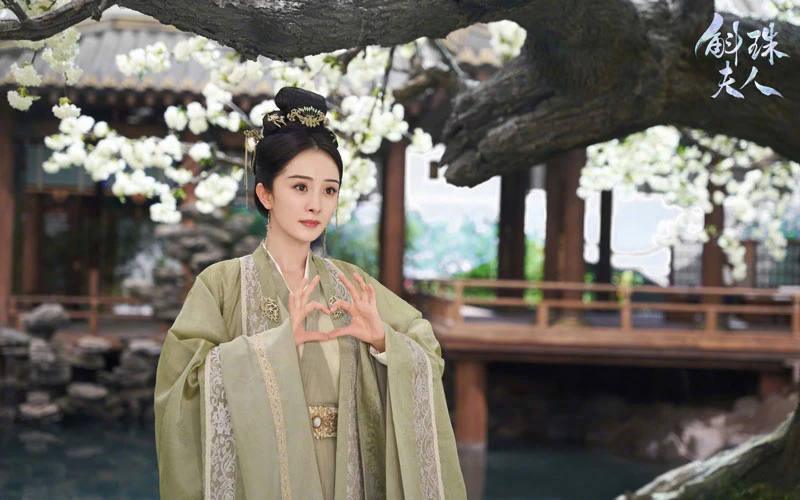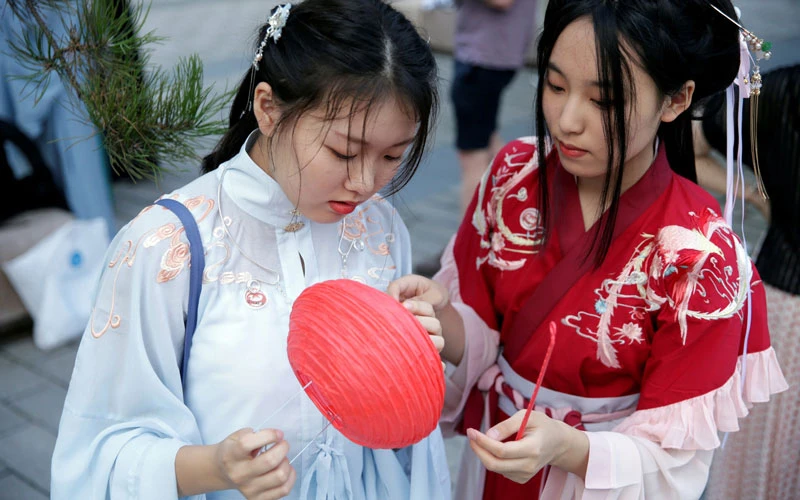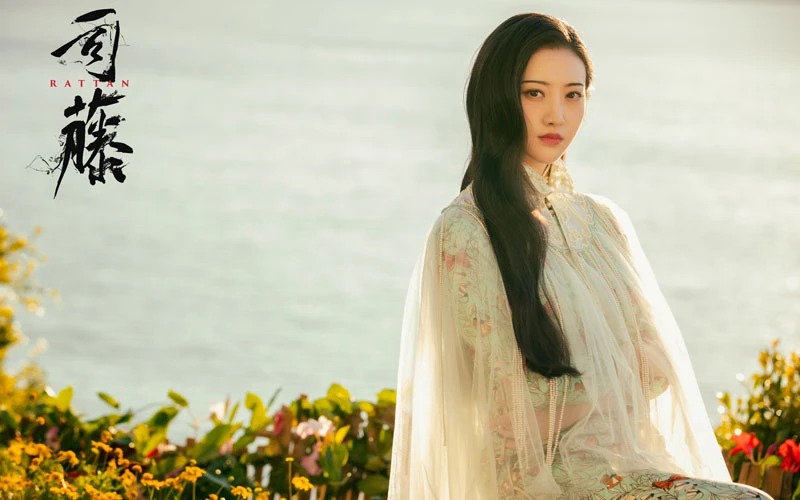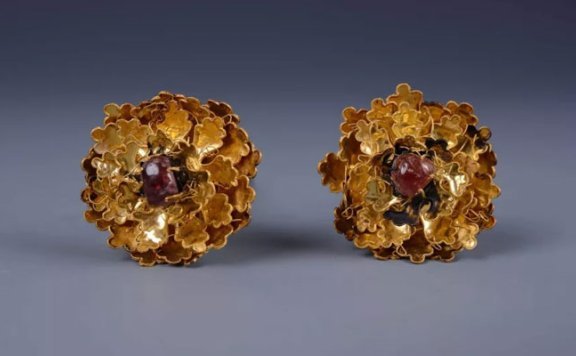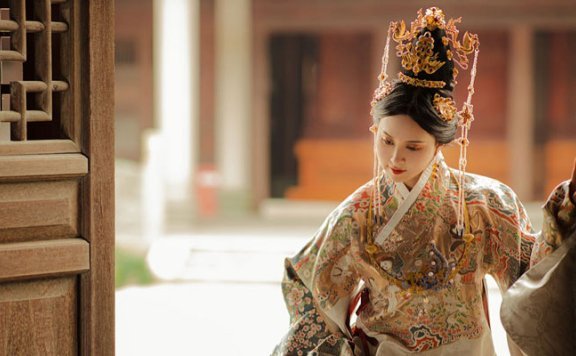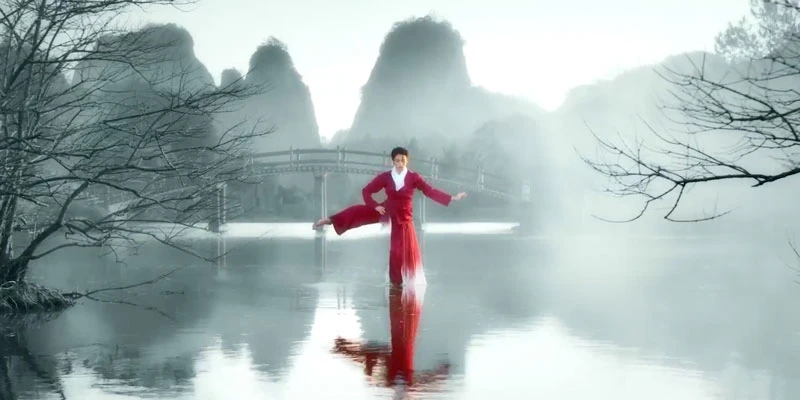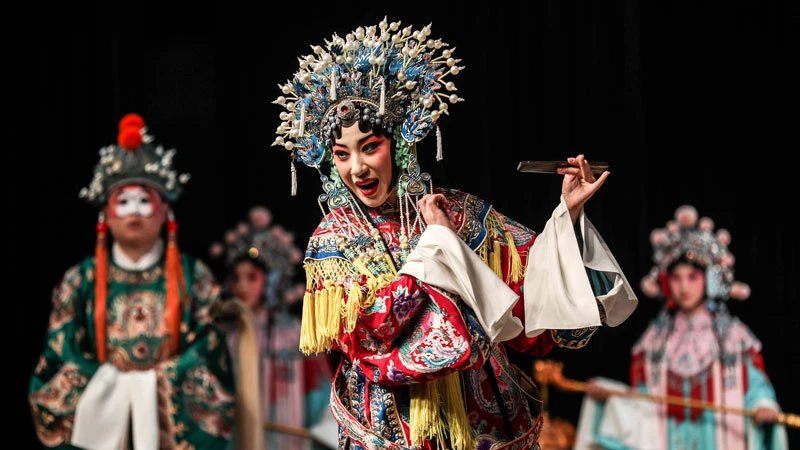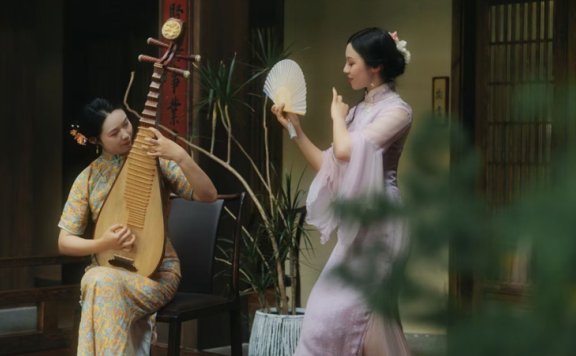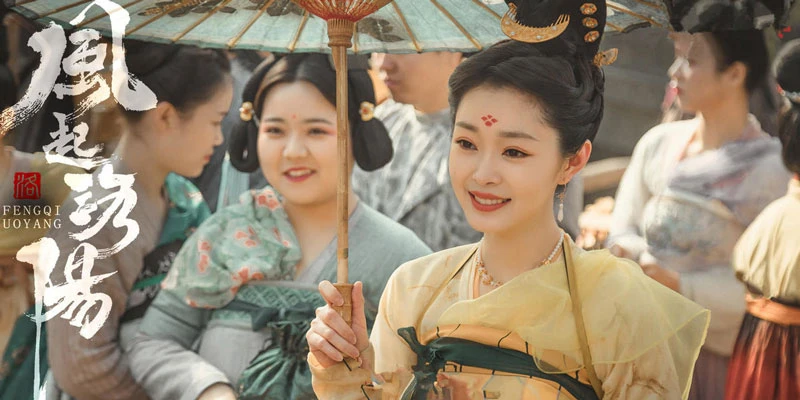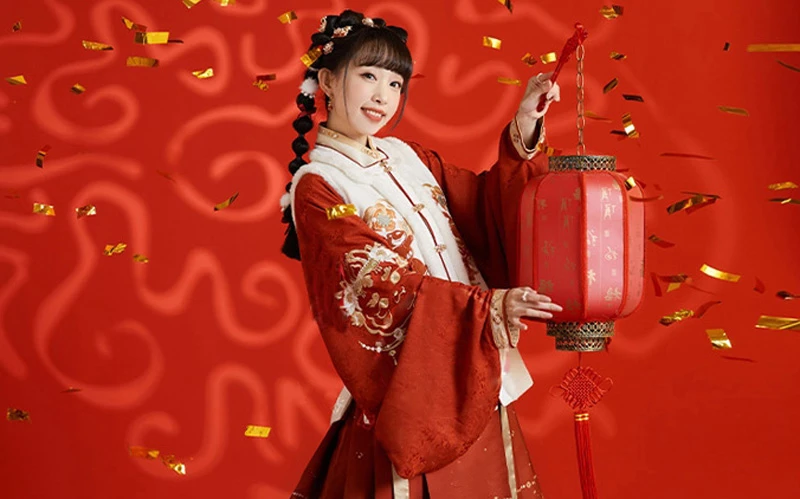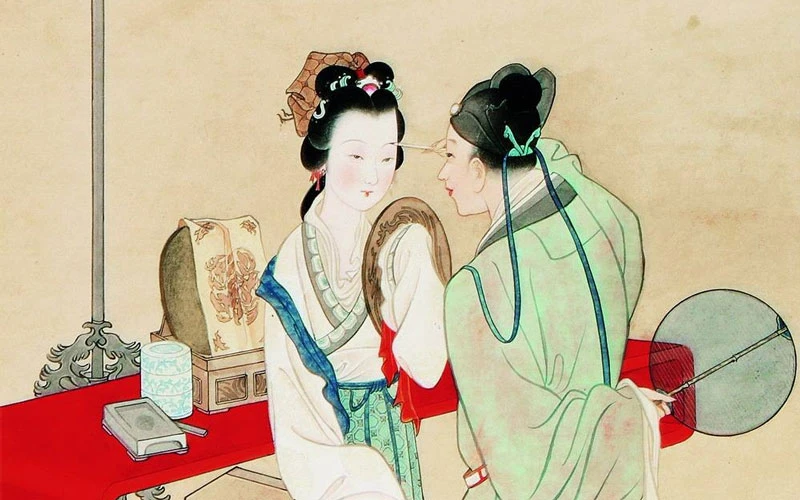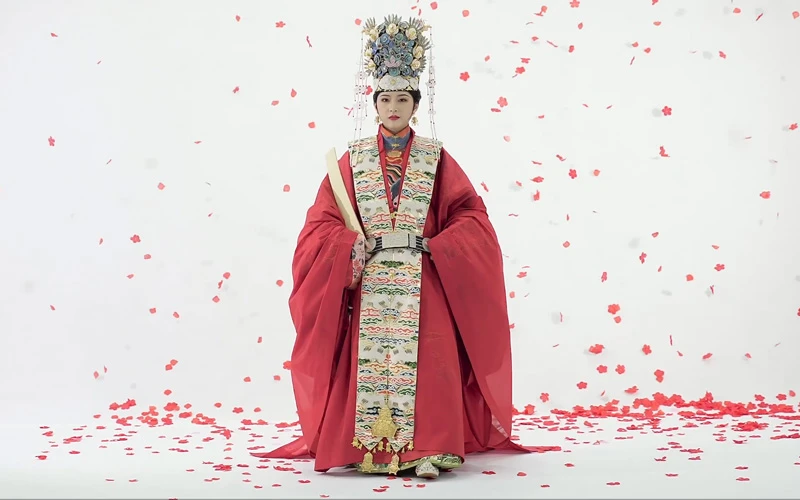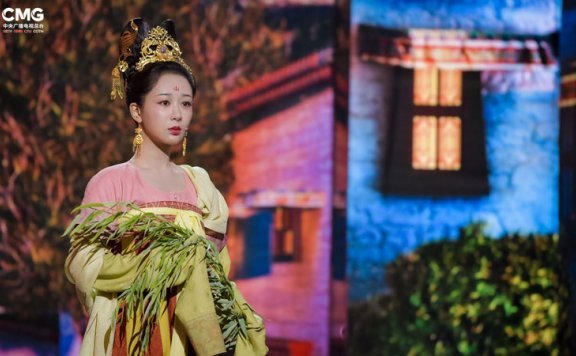Article
搜索结果:
-
My Hanfu Story I: Hanfu and Being Genderqueer
A personal account of what hanfu means to me as a gender fluid person. -
Flowers to Highlight Your Spring Hanfu Attire
For many of us, spring is finally here! Spring means new beginnings, fresh starts, new growth. It’s the perfect time to start looking for new jobs, new opportunities, or even new relationships. If you’re ready to make a fresh start with a spring hanfu look, then take a look at these 12 floral patterns that are guaranteed to get you noticed this spring. You’ll be sure to stand out in a crowd! In Chinese tradition, there is a representative flower for each month. Turning the beautiful floral into embroidered or printed patterns on the spring hanfu attire not only makes the hanfu more colorful, but the best expression of the beautiful symbolism of these flowers. January - Plum Blossom Look 1 Inner: Hezi Qun Set (诃子裙) Outer: Daxiu Shan (大袖衫) Dynasty: Tang Look 2 Inner: standing collar slash lapel Changshan (立领斜襟长衫) Outer: Bijia (比甲) Skirt: Mamian Qun (马面裙) Dynasty: Ming February - Apricot Blossom Look 3 Inner: Qiyao Shanqun set (齐腰衫裙) Outer: lapel Changshan (对襟长衫) + Xiapei (霞帔) Dynasty: Song Look 4 Inner: standing collar wide sleeve Changshan (立领广袖长衫) Outer: Yunjian (云肩) Skirt: Mamian Qun Dynasty: Ming March - Peach Blossom Look 5 Inner: Qiyao Shanqun set… -
6 Most Popular Styles of Mens Hanfu
What are some styles of hanfu for men? Read about six of the most popular types! -
4 Simple Hanfu Hair Styles to Match Modern Hanfu Easily
Many hanfu lovers have been confused about how to choose the right hanfu hair style to match their hanfu. Overly complicated hanfu hair styles mean tedious steps and long hours of preparation. But retro hanfu hair styles are not the only option. In fact, more and more hanfu lovers are choosing to match their hanfu with more stylish and simple hairstyles, especially when wearing modern hanfu style. In this way, hanfu can gradually integrate into modern society while retaining its traditional cultural connotations. Let's take a look at four modern hanfu hair styles that easily go with your hanfu, as shared by Yi Zhi Keke. 01 Low Coiffure Hairstyles Hairstyle features The back of the head coiffure is very simple, just tie a ponytail at the back of the head, then twist it into a clockwise circle and wind it up. If you think the modeling is too monotonous, you can also insert a hairpin, or coiffure hair band together with the coiled in, which will make the overall modeling more gentle and soft, but also with a little mature woman's charm. This kind of coiffure is most suitable with curtain bangs, so that both romantic style, but also… -
History of Chinese Traditional Necklace & Choker
The ancient women left their stunning figures in the ancient poets, and their bejeweled were equally eye-catching. That brilliant hanfu jewelry like a river of stars, will set them off quiet, elegant, highlighting the unique charm. In this article, let's go into the history of gorgeous Chinese traditional necklace and choker and see how the ancient people carried forward the beauty of neckwear. The Ancient Times When our ancestors were still living in cold, dark caves, the sense of beauty was already awakened. They searched for anything that resembled "beads", drilled holes in them, strung them on chains, and wore them around their necks. Some of them were also painted red with hematite powder. At the Zhoukoudian Peking Man site, which is about 30,000 years old, a large number of neck ornaments have been unearthed. These neck ornaments are made of different materials, including gravel, animal teeth, fish spine bones, and bird bones, all of which have been carefully selected and polished. Among them, there is a string of rabbit bone chains, consisting of 12 pieces of rabbit backbone, each of which has a hole for threading. The holes have been worn out and deformed due to long-term wear,… -
How to Put Together a Hanfu-Inspired Outfit Without Hanfu
Want to put together a hanfu-inspired outfit, but still waiting on your hanfu to arrive? Here's how to do it! -
Origins of the Qingming Festival
The Qingming Festival is coming up soon! Learn more about where this holiday came from and some things that you can do to participate in celebrating it, both in the way of the ancients and the way that people do now. -
The Ultimate Aesthetic in Cdrama Novoland: Pearl Eclipse
Novoland: Pearl Eclipse (斛珠夫人), the hottest Chinese drama at the end of 2021, once again proves that Chinese Xianxia dramas still have solid fundamentals in the drama market. This drama is a new way to open up fantasy drama with its extreme refinement in many aspects such as emotional arrangement, female characterization, and delicate deconstruction of traditional culture. The Ultimate Beauty of Emotional Lines Drama is the art of narrative, and how to tell a good story has always been a difficult task in the creation of dramas. Under this, Novoland: Pearl Eclipse continues to work carefully on the expression of connotation and emotional arrangement, giving this drama a unique quality and extraordinary significance. The story of Novoland: Pearl Eclipse is well laid out and clearly structured, and the three emotional lines are intertwined and complement each other, so that the expression space and aesthetic tension of the drama are fully extended in the narrative. Fang Hai Shi and Fang Zhu In the drama, all three couples are heart-wrenching. Fang Hai Shi and Fang Zhu have experienced many life-and-death situations and have become attached to each other, but Fang Zhu is unable to respond to Hai Shi's love because… -
How to Film a Hanfu Transition Video
Most of you have probably watched similar kinds of videos involving ‘transitions’—essentially, transitioning from modern-day or loungewear-like attire to being dressed up in gufeng-style hanfu. Why not try to learn how to film one yourself? -
Cdrama Rattan: Hightlight and Cheongsam Look Analysis
If you are a cheongsam enthusiast, then you must watch the Chinese drama Rattan (司藤). With its novel and compact plot, perfect cast, refreshing cheongsam looks, and documentary-style live-action interpretation, it is a drama worth watching. The story of a young designer, Qin Fang (Zhang Binbin), who meets Si Teng (Jing Tian), who has been asleep for decades, in the process of helping Si Teng to find the truth of her birth, the two get to know each other and overcome many obstacles to grow together. As a classical oriental fantasy drama, the success of Rattan undoubtedly let us see the deep charm of Chinese mythology latent. Perfect Character selection and setting Wei Yu, the author of the Rattan original, specializes in fantasy themes with rich imagination and strong writing power. The female characters in her works mostly exude mature and independent femininity. In the original novel, "Miss Si Teng" is the extreme image of a female protagonist who has been assassinated and fallen asleep for decades, and wakes up confused about the modern society she lives in, and plays a series of heartwarming and hilarious scenes. When adapting the original work, which has a large fan base, the… -
Guide to Identifying Chinese Traditional Auspicious Ornaments
Chinese traditional auspicious ornaments are an important part of an artifact. The decoration on the object not only increases the beauty of the object, but also sends people's expectation and hope for the future through the ornaments with good meaning. The most complex and exquisite period of traditional Chinese ornamentation belongs to the Ming and Qing dynasties. Especially the Ming dynasty gold and silver jewelry, the use of Lei Si (累丝), Xiang Qian (镶嵌, inlay), Chui Ye (捶鍱, pounding thin) and other processes, in a small and delicate Tou Mian (头面, a Ming dynasty jewelry) to make a variety of plants, animals, people ornaments, and embellished with precious stones, more rich and elegant. In the Ming and Qing dynasties, on various handicrafts and even stone carvings, furniture, and architecture, some common ornaments, such as dragon and phoenix signify auspiciousness and power; peony signifies wealth and prosperity; pine, crane, and peach signify longevity; pomegranate signifies to have many descendents. There is another category of ornamentation, which is a combination of animal and plant patterns, expressing good meanings through harmonics pun, very simple and easy to understand. For example, an old lion and a small lion, meaning that the family soon to… -
Innovative Combination of Filigree Inlay Art With Hanfu, He Did It
Liu Chao's family has been filigree inlay artworks craftsmen for three generations, and they have devoted almost all their time to this craft. But in China, some traditional craft are facing the crisis of being lost, so how did Liu Chao inherit and carry forward the traditional craft of filigree inlay? Filigree inlay (花丝镶嵌), also known as "fine gold art", is a long-established traditional Chinese handicraft technique, mainly used in the production of royal jewelry, in ranked among the Eight Unique Skills of Yanjing (original name of Beijing). In 1963, Liu Chao's maternal grandfather Li Yucheng learned "filigree inlay" from an old artist, and now it has been 57 years. From the grandfather, to Liu Chao's mother, to Liu Chao today. More than 20 years ago, Liu Chao used to follow his father and go to the street stall with the filigree inlay Ruyi, and with the change of time, a new generation of craftsmen has inherited these crafts. In Liu Chao's case, it is apparent to see the seemingly contradictory combination of innovation and tradition in the new generation of craftsmen. On the one hand, he is considered to be a person who follows the trend of the… -
How did Chinoiserie Dance shine at the Chinese New Year Gala
Although the 2022 Spring Festival Gala is over, the powerful after-effects are still immersing people in the beauty of the Chinoiserie dance that they cannot extricate themselves from. Dance "Zhi Ci Qing Lǜ" performed in the CCTV Spring Festival Gala once again occupying the headlines of major media, with exquisite costumes and makeup, beautiful and elegant dance, and wonderful interpretation, directly to the heirloom painting of talented young Wang Ximeng. The 1:1 perfect reproduction of "A Panorama of Mountains and Rivers", the wonderful degree is comparable to the real one. But it's not just Zhi Ci Qing Lǜ, the Chinoiserie-inspired dances have received unanimous acclaim at Spring Festival Gala all over China. 2022 Henan Spring Festival Gala Henan TV has surprised us all year long in 2021, and this year's dance program, "Exquisite Beauty and Heavenly Fragrance", will naturally not disappoint. Inspired by the Tang Dynasty, the dance uses peonies to find poetic characters and historical culture. 11 top dancers, present the scenes of the blooming world vividly on the stage with graceful, elegant, and rhythmic dance postures. In the dance, legendary characters such as Bai Juyi, Di Renjie, Shangguan Wan'er, Zhang Xu, Yu Wenkai, Li Chunfeng and Yuan… -
Are the Beijing Opera Costume the Same to Hanfu Costume?
From the beginning of the hanfu revival to today, regardless of the general acceptance of hanfu, there are always some hanfu lovers who wear hanfu to some events and occasionally encounter the question asked by others: Are you going to attend a Peking Opera performance or the recording of the show? Of course, such embarrassing situations may be rarer nowadays, but most people still confuse traditional Chinese opera costumes with the hanfu. The costumes used in Beijing opera are also categorized with traditional Chinese opera costumes, which are different from the Chinese hanfu costume. It is because some of the opera costumes are inspired by hanfu and naturally there are similarities in some parts, but what are the specific differences between the two? Let's follow the Hanfu Shidai (汉服世代) and find out. Chinese Opera costume vs Hanfu Hanfu - the full name of the Han traditional costume system - is divided into two historical stages: ancient and modern. The ancient hanfu originated from the creation of the Yellow Emperor's garments and vanished at the beginning of the Qing Dynasty under the policy of "Tifa Yifu", which was a self-contained cultural system. The modern hanfu is a traditional national dress… -
The Origin of Cheongsam and Chinese Women Is the Memory of Stunning Times
01 The cheongsam loved by women Eileen Chang once said, "Clothes are a language", and every heroine in her novels would use the style of cheongsam to interpret the sorrow and happiness of love, and the prosperity of silk to lament the impermanence of fate. And Eileen Chang's love for cheongsam can be described as close to crazy. Cheongsam is not only an important prop in her novels, but also an indispensable costume in her life, and it is an expression of her views on life, aesthetics and women. The cheongsam maker who made her cheongsam recalled that he couldn't remember how many pieces of cheongsam he made for Eileen Chang, but he remembered that each piece of cheongsam was made "according to the drawing", and the design came from Eileen Chang herself. Not only Eileen Chang, but also Chinese women in the 1930s and 1940s seemed to be very fond of cheongsams. Soong Mei-ling was no less fond of cheongsams than Eileen Chang, and she had hundreds of cheongsams in her closet. Film and television stars such as Hu Die, Ruan Lingyu, and Zhou Xuan are also fans of cheongsam, they not only wear cheongsam out of their own… -
Song Yi Surprised Everyone Again! With Her Stunning Ancient Costume Look
The ancient suspense drama "Feng Qi Luo Yang (风起洛阳)", adapted from Ma Boyong's novel "Luo Yang", is well-produced, with ups and downs and a high degree of popularity. Song Yi (宋轶), who plays Liu Qiniang (柳七娘, Liu Ran) in the drama, has also received a lot of praise from netizens for her rich costume styling and exquisite makeup. The drama is about a series of unsolved cases that occurred in Luoyang, during the heyday of the Tang Dynasty. Gao Bingzhu, played by Huang Xuan, is involved in a murder case by mistake, and together with Wang Yibo as Baili Hongyi and Song Xi as Wu Siyue, they are involved in investigating the truth of the murder case. In the drama, Song Yi plays the role of Liu Qiniang, the wife of Baili Hong Yi. The audience is not only concerned about whether the mysterious case can be uncovered, but also the daily interaction between Baili Hongyi and Liu Qiniang, who got married first and then fell in love, is one of the main points to watch. Liu Qiniang, who is deeply in love with Baili Hongyi, is bold and courageous, quite likeable. The wedding look in the drama also harvested… -
5 Fabulous Hanfu for Chinese New Year With Good Luck!
As the end of the year approaches, many families are preparing for the Chinese New Year, buying new clothes and new year's goods. Spring Festival is the grandest traditional festival of Chinese folk, Spring Festival represents the family reunion, many wanderers, or people struggling to live outside to go home for the New Year, the Spring Festival is also the heritage of traditional Chinese culture. Chinese New Year, generally wear some more festive clothes, such as red color hanfu used to match the festive atmosphere of the Spring Festival is very suitable, traditional costumes with traditional Chinese festivals, will be rendered more rich flavor of the year. Next, come with me to choose the proper hanfu for Chinese New Year! Ming Dynasty standing collar long jacket match horse face dress, printing exquisite, fabric with delicate dark pattern. The gentle red color with the charming purple color brings out the quality texture of the whole hanfu. Flower pattern square collar Ming Dynasty jacket and gradient white and blue horse face skirt, the clothes are also printed with gold glittering small flowers, through the infinite cute, suitable for the sweet girls, joyful and well-behaved and playful look especially pleasing to elders.… -
History of Traditional Chinese Eyebows Makeup - Material & Shape
The history of traditional Chinese eyebrows makeup can be traced back to the Spring and Autumn Period(770 to 476 B.C.). There is a verse in "Chu Ci" that says "Black-painted eyebrows and white-powdered cheeks(粉白黛黑,施芳泽之).", which means that women were wearing powder, drawing eyebrows and rouge at that time. Traditional Chinese Eyebows Tools Eyebrow tools are crucial. Unlike modern eyebrow pencils, eyebrow powders, eyebrow cream, etc., there are a wide variety of tools to choose from. But the ancients were still creative with their limited tools. Before there was a specific material for eyebrow painting, Dai (黛), it was mainly used to draw eyebrows with burnt willow sticks, which women used to burn and apply to their eyebrows. The earliest material used to paint eyebrows was Dai, a black mineral also known as "Shi Dai (石黛)". Stone inkstones for grinding stone Dai are found in Han tombs, which means that this cosmetic was already in use in the Han Dynasty. Before paint eyebrows, stone Dai had to be ground on the stone inkstone to make it into powder, and then water was added to mix it. In addition to black color, there is also a dark gray material for painting… -
Detail of Royal Hanfu Dress for Ming Dynasty Noble Women
The ancient Chinese were designed the clothing and crown system with distinct rank differences, to conform to the social order. Women's clothing is the same as men's, was constrained by system and etiquette. This article, centered around Ming Hua Tang's hanfu, introduce you to the detail of royal hanfu dress for noblewoman (Ming Fu, 命妇) in the late Ming Dynasty. The Definition of Ming Fu According to Ming Dynasty regulations, officials from the first to fifth ranks are eligible for the "Gao Ming" (诰命). The title "Gao Ming" is mandated by the imperial court. It is the "sacred decree" commonly known as folklore, like the exhortation came from The emperor himself. The "Gao Ming" is all vouchers for the court to grant officials and their relatives. According to the rank of officials, obtaining a "Gao Ming" sometimes requires considerable effort. For example, have made achievements in politics or the military. Women follow the rank of their husband or son. A woman who is granted a "Gao Ming" is called a "Ming Fu" (women with imperial exhortation). According to the rank from high to low, there are titles such as Fu Ren(夫人, the Honorary), Shu Ren(淑人, the Kindness), Gong Ren… -
The Most Classic Tang Dynasty Hanfu Look - in the National Treasure
National Treasure (国家宝藏) can be said to be one of the must-see programs for lovers of traditional Chinese culture in recent years. In the last three seasons, the program teamed up with museums around China to present a large number of Chinese treasures and relics for viewers, telling their past and present, bringing contemporary people closer to historical relics. The Chinese traditional costumes - hanfu, that appear in the program are fully restored according to history, allowing viewers to appreciate the most authentic historical costumes of China. Such as Princess Wencheng, played by Yang Zi in the third episode of the third season, telling the story of her past life and present life, which has attracted a lot of attention. In addition, Yang Zi's Princess Wencheng styling broke the audience's inherent impression of Tang Dynasty costumes, and was even called the new template for cdrama costumes. 01 Styling Origins In fact, Yang Zi made such a stunning appearance, thanks to the program's restoration of history. In the program, Yang Zi did not wear a Tibetan robe, but a red + gold Banbi high waist ruqun hanfu. The first appearance, there are many viewers wondering, why Yang Zi since wearing…
